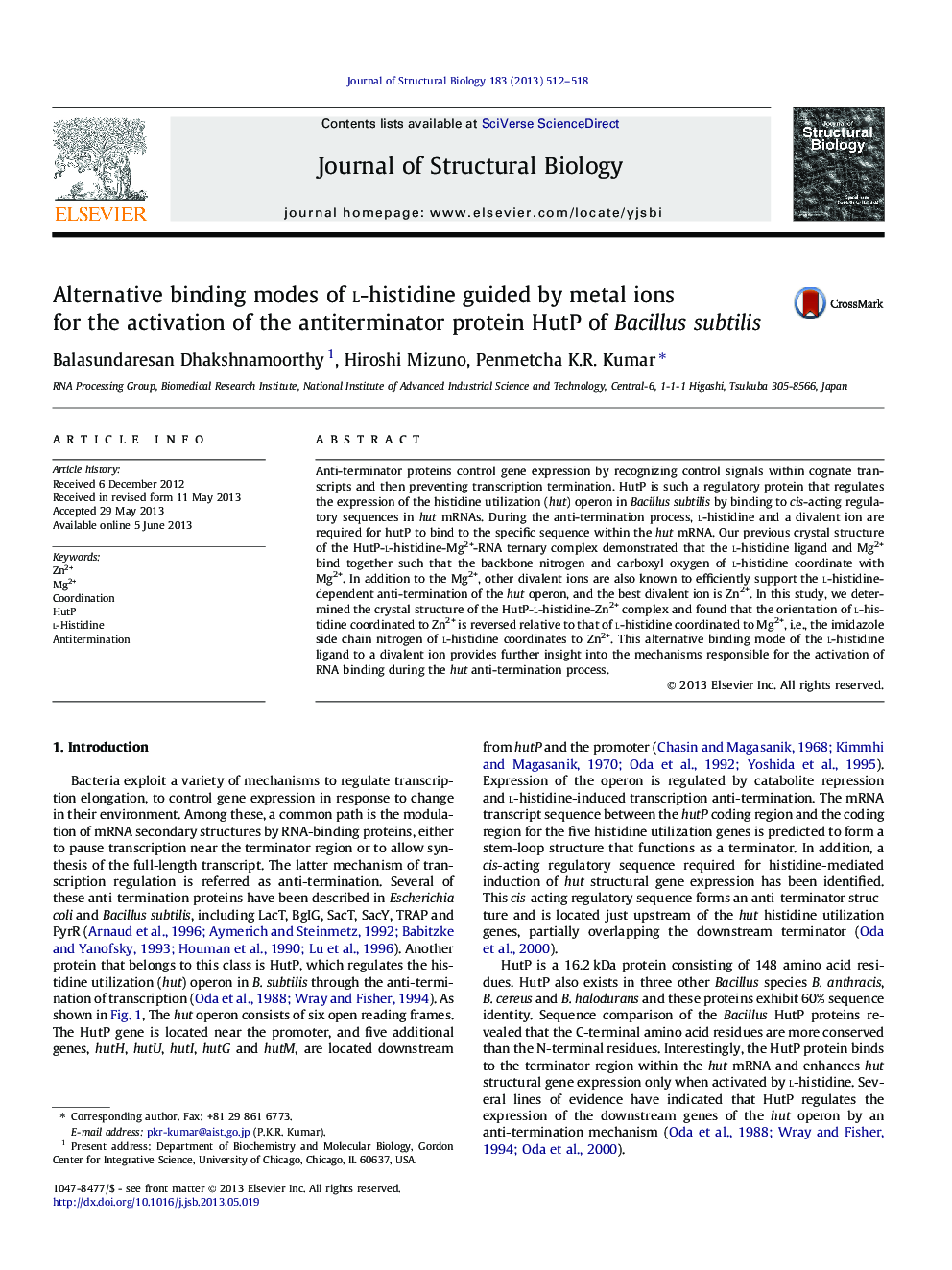| Article ID | Journal | Published Year | Pages | File Type |
|---|---|---|---|---|
| 5914383 | Journal of Structural Biology | 2013 | 7 Pages |
Abstract
Anti-terminator proteins control gene expression by recognizing control signals within cognate transcripts and then preventing transcription termination. HutP is such a regulatory protein that regulates the expression of the histidine utilization (hut) operon in Bacillus subtilis by binding to cis-acting regulatory sequences in hut mRNAs. During the anti-termination process, l-histidine and a divalent ion are required for hutP to bind to the specific sequence within the hut mRNA. Our previous crystal structure of the HutP-l-histidine-Mg2+-RNA ternary complex demonstrated that the l-histidine ligand and Mg2+ bind together such that the backbone nitrogen and carboxyl oxygen of l-histidine coordinate with Mg2+. In addition to the Mg2+, other divalent ions are also known to efficiently support the l-histidine-dependent anti-termination of the hut operon, and the best divalent ion is Zn2+. In this study, we determined the crystal structure of the HutP-l-histidine-Zn2+ complex and found that the orientation of l-histidine coordinated to Zn2+ is reversed relative to that of l-histidine coordinated to Mg2+, i.e., the imidazole side chain nitrogen of l-histidine coordinates to Zn2+. This alternative binding mode of the l-histidine ligand to a divalent ion provides further insight into the mechanisms responsible for the activation of RNA binding during the hut anti-termination process.
Related Topics
Life Sciences
Biochemistry, Genetics and Molecular Biology
Molecular Biology
Authors
Balasundaresan Dhakshnamoorthy, Hiroshi Mizuno, Penmetcha K.R. Kumar,
